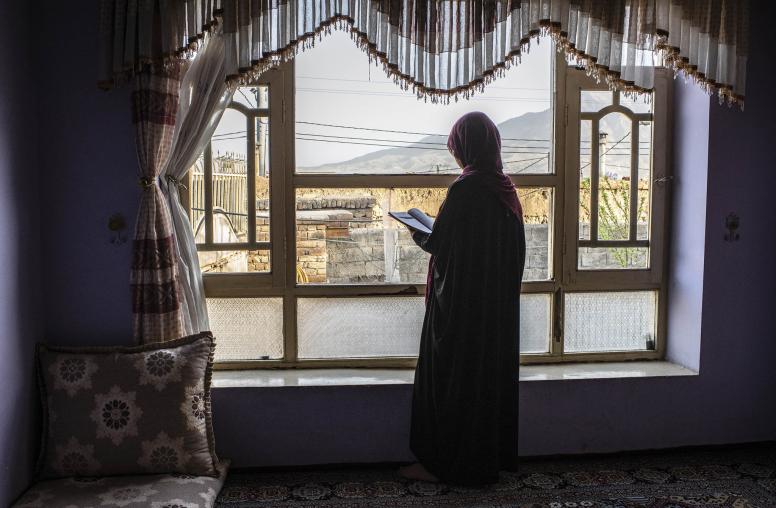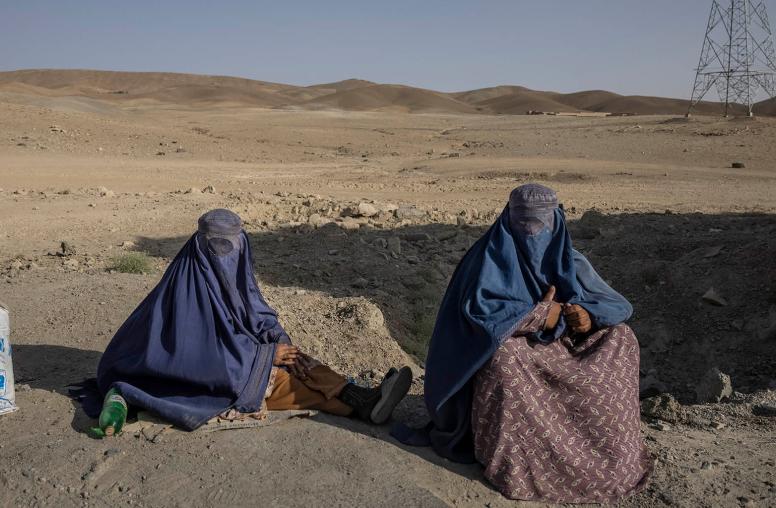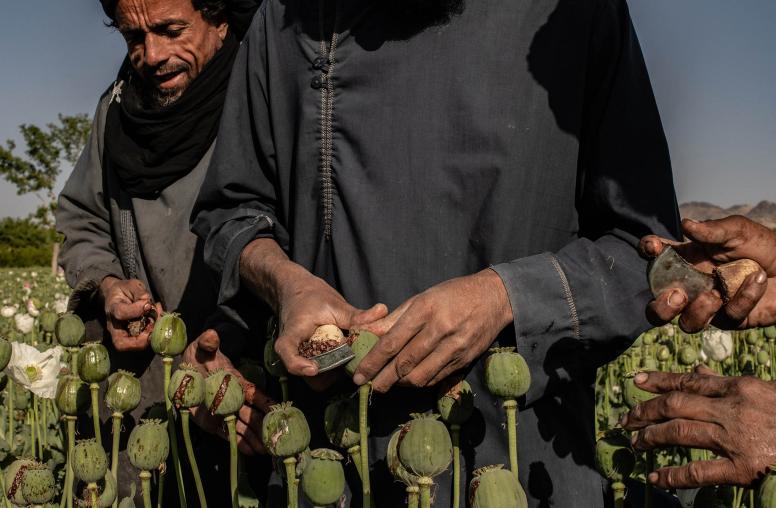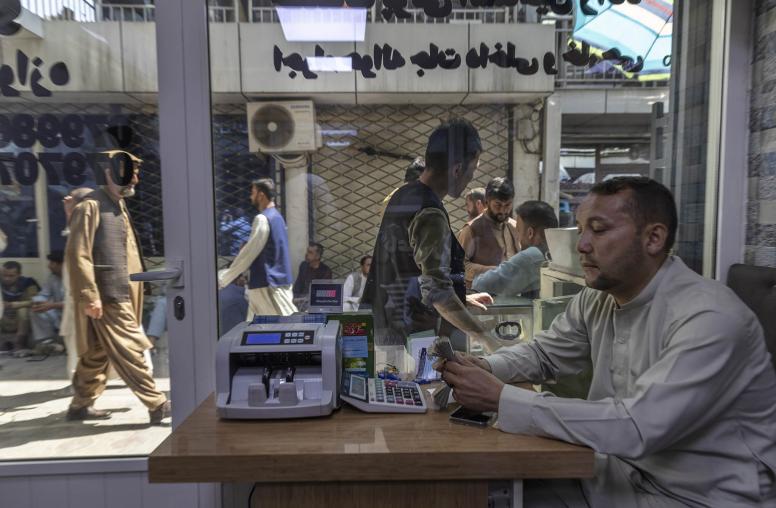Afghanistan’s Economic Development Hinges on the Peace Process
Security and political dynamics should be integrated into Afghanistan’s development agenda at Geneva
Breaking out of Afghanistan’s current economic stagnation, rising unemployment, and poverty will only be possible if there is strong, sustained progress toward durable peace and political stability. Lowering security costs and, over time, reducing the extremely high aid dependency is the only way for the country to move toward balancing its budget books. Even the most ambitious plausible increases in Afghan government revenue will not make much of a dent in the fiscal gap (standing at approximately 35-40 percent of GDP), as long as security expenditures remain over one-fifth of GDP.

Given the complexity of Afghanistan’s problems and the international intervention, there is a risk of compartmentalization between security, political and diplomatic, and development spheres. Beyond coordination issues and working at cross-purposes on the ground in Afghanistan, there is also a risk of compartmentalization at the periodic high-profile international meetings on Afghanistan, which have been bifurcated between security summits (held by NATO) and development conferences.
Avoid Compartmentalization at the Geneva Conference
On November 27-28, the Afghan government, United Nations, and countries and agencies supporting Afghanistan’s development will hold their biennial conference in Geneva. Rather than compartmentalizing, the Geneva meeting should strategically integrate security and political dynamics into its development agenda. One objective of the meeting is to review progress against agreed development objectives and targets set at the October 2016 Brussels conference, which is important. But these high-profile international meetings are hardly worth holding if they just review past progress and do not also look toward the future.
The Afghan government and some other stakeholders understandably want to present a more optimistic outlook in contrast to the economic stagnation, rising poverty, and continuing high aid dependence the country has experienced over the past half-decade. However, any major improvement in GDP growth and other economic and human indicators would only be possible under a “peace scenario.” Therefore, injecting some degree of optimism into the discussion inevitably requires explicitly including the peace and reconciliation agenda.
Holding elections, a quintessentially political process, is part of the Geneva agenda (noted in the Brussels Communique and as the first target in the Self-Reliance through Mutual Accountability Framework agreed at Brussels). Undoubtedly the quality and outcome of the parliamentary elections, currently scheduled to be held on October 20, will cast their shadow over the Geneva meeting. Moreover, based on the announced April 20 date for the 2019 presidential election, candidate registration will be underway by the time of the meeting. The broader political linkages are, therefore, unavoidable and best explicitly recognized, not left as the undiscussed “elephant in the room” at Geneva.
Growth Through Peace
As at previous meetings, baseline, high and low economic projections will be put forward. Clearly the baseline scenario—essentially more of the same—will be characterized by continuing slow GDP growth, negligible increases in average per-capita incomes at best and continuing high or further rising poverty rates and unemployment. This scenario would be subject to downside risks, and a “low” scenario could stem from adverse shocks such as drought (which is already happening) or other natural disasters, problems with the 2019 presidential election, deterioration in security and government control, and accelerated return of Afghan refugees and migrants from nearby countries.
The only change that could bring about a more optimistic “high” scenario, with reductions in poverty and unemployment, is credible and durable progress on the peace front. Together with political stability—if that emerges from the 2019 election—it would be a game-changer for Afghanistan’s economic prospects. Any credible high-growth scenario in the coming half-decade therefore would have to be based on real progress toward peace and reconciliation. At Geneva, the prerequisites for development progress should be laid out and what level of economic growth may be possible in a peace scenario assessed.
Moreover, the ongoing initiatives and discussions on reconciliation are serious enough that they call for parallel efforts on the development side to prepare for at least the possibility of peace. Progress on reconciliation will present opportunities, such as major savings in security costs over the medium-term, the typical post-conflict economic boom, and a construction and investment boom driven by return of Afghan capital and savings, among others. There will also be costs—including deals with different protagonists, reintegration of combatants, rebuilding damaged infrastructure, and restoring and expanding basic services—and risks, particularly the risk of relapse into conflict.
Development interventions would need to be ramped up and tailored to a dynamic, evolving post-conflict context. Given the inevitable delays in development programming, it would be far better to put in place broad parameters and plans in advance, rather than the rushed scrambling that often occurs during peace processes. The latter can result in delayed or distorted development support, promises made as part of peace agreements not being fulfilled, and the associated risk of disappointments and accusations of non-delivery leading to relapse into conflict.
The strategic linkages between security, political dynamics and development are just as important in less optimistic scenarios. The security-development trade-off in terms of funding is key. It will be critically important to prevent ever-rising security spending from taking away more and more government revenue and thereby excessively squeezing funds for high-priority civilian expenditures, and to maintain aid, especially on-budget aid.
A typical “low” scenario, with GDP growth around zero or just one or two percent per year, is unlikely to be sustainable in Afghanistan. It would imply that there has been significant deterioration on the security or political fronts—or both. A low scenario easily could turn into a collapse. Continuation of the current baseline scenario is more likely to be sustainable, as long as international security and financial support is maintained and any political problems in the current election cycle are manageable.
Integrating the Development Agenda at Geneva
This plea for strategic integration should not be taken as an invitation to “securitize” the Geneva meeting let alone Afghanistan’s development agenda more generally—too much of that has already occurred, and based on past experience during the 2009-2011 “surge” period, it would be counterproductive. On the contrary, the development voice, too often missing from political, diplomatic, military, and reconciliation debates, must be heard at Geneva and as peace efforts move forward.
Finally, though the value of these high-profile international meetings on Afghanistan is sometimes questioned, it is critical to ensure that the Geneva meeting is effective. This requires, inter alia, that:
- The profile of representation at Geneva be minister-level, as in Brussels and earlier international meetings on Afghanistan;
- The meeting has a substantive agenda;
- Quality background work is prepared and cogently presented in digestible form; and,
- The peace dimension and at least to some extent political dynamics are incorporated in the analysis and agenda for the discussions.
The integrated analysis and agenda should be distributed well in advance of the meeting, so participants can be well-prepared for the discussions. Waiting until the Geneva meeting itself before raising peace and stability aspects and their integration into the development dialogue would be too late. Even if prospects for peace may appear remote, Afghanistan’s future development, if we are talking about something better than the near-economic stagnation with high and rising poverty seen in recent years, requires durable peace and a reasonable degree of political stability.



